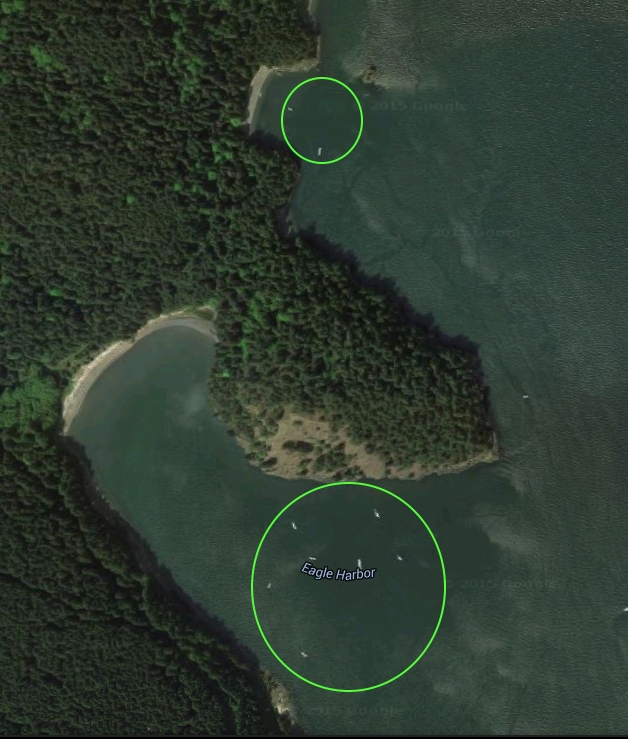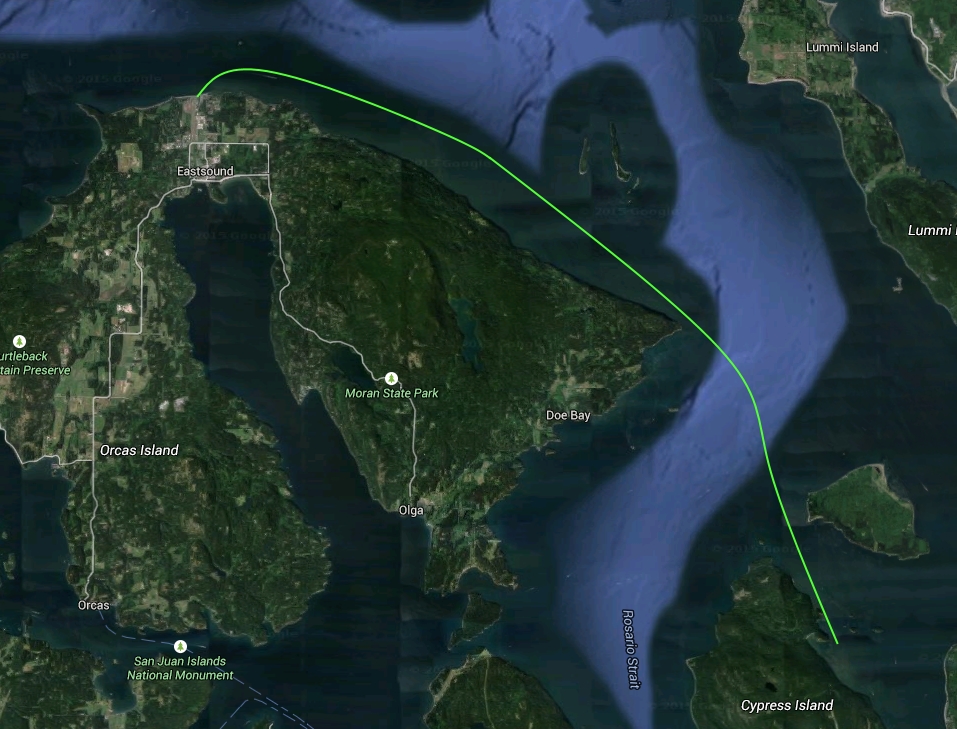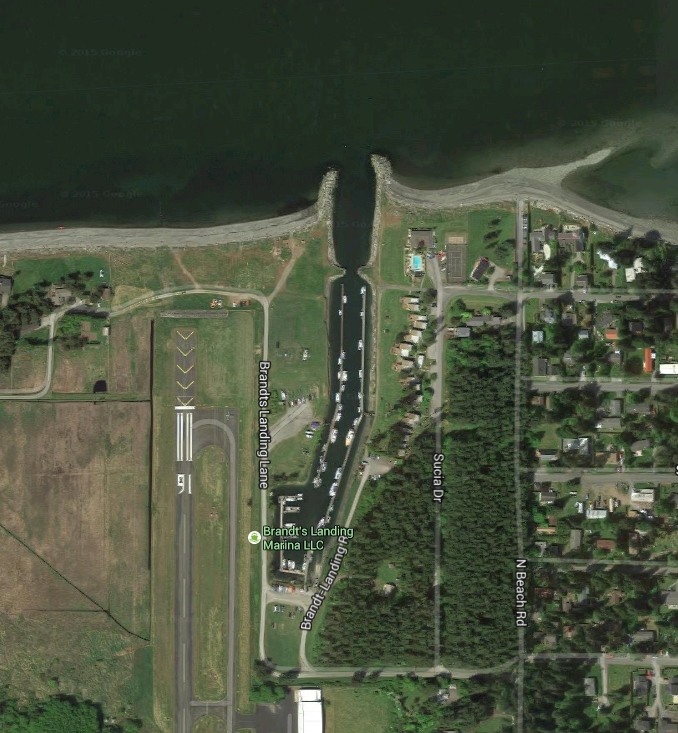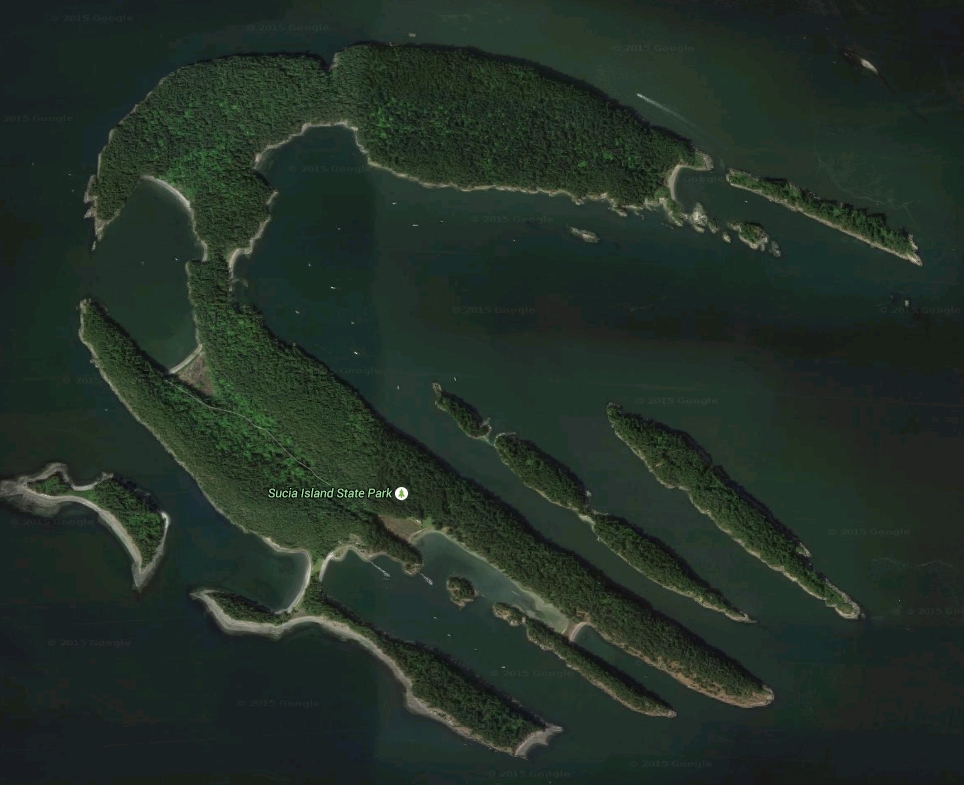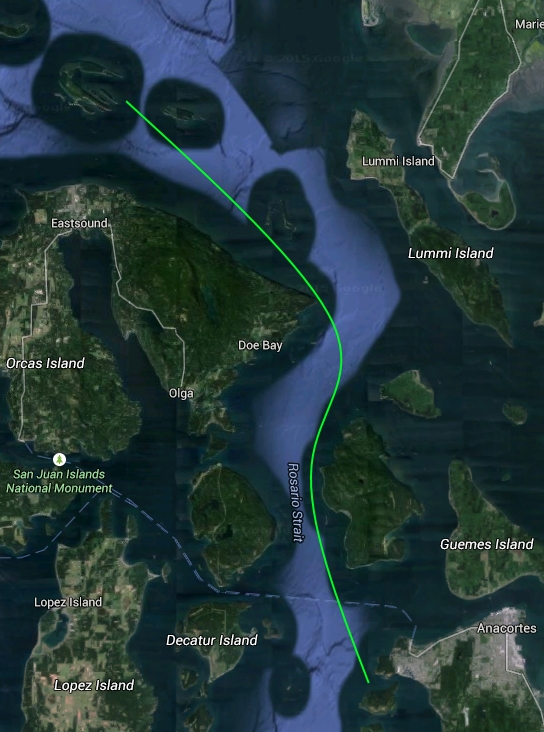I’ve been so busy this past month I haven’t even updated this blog with the few bird photos I took while camping in early July, but it’s time once again for planning the route for another sailing charter. This time I’ve chartered Christelle, a Beneteau Oceanis 505 (a 50′ monohull sailboat) out of Anacortes, WA for a 4 day, 3 night trip into the San Juan Islands in early September, and nine friends will be joining me.
This is going to be a very different trip than the British Virgin Islands trip for a few readily apparent reasons:
- Tides are a factor
- The vast majority of the mooring balls in the San Juans are owned by the state and have a max boat length of 45′
- Despite a similar overall area, the islands of the San Juans have much more land area than the BVIs
- Swimming is not an option due to the cold water
For that first point, it means I need to pay close attention to my anchorages. In the Caribbean, because the tidal differences are so small, this isn’t something we need to bother with at all. But in the Pacific Northwest, we can get tidal differences of 10-15 ft. This presents more than one problem for anchoring: not only do I need to be careful that the boat’s keel won’t hit the bottom due to an extra-low tide, I need to take high tides into account when I determine how much chain to let out for the anchor: too much and we’ll have a really large swing arc, too little and our scope (the ratio of the length of the chain to the depth of the water) will get too steep at high tides, making our anchorage less secure and increasing the likelihood of dragging the anchor.
Why are we anchoring, when we used mooring balls most evenings in the BVIs? Turns out this boat is just too big. Not only do the state-owned mooring balls have the maximum 45 ft boat length, some of the (very few) privately owned buoys I was able to find information on had an even shorter 35 ft limit.
The size of the islands has a few impacts: first, it limits where in the islands we can easily get to in reasonable amounts of time. Unlike the BVIs, where there’s plenty of space between each island, the San Juans are rather tightly packed, with more land in the way than otherwise. Combined with the short trip, it means we’ll be somewhat conservative with the distances we plan on sailing each day. The sizes (and height of the mountains!) can also mean a lot for wind patterns as well.
Finally, since swimming/snorkeling isn’t an option, we’ll find other things to pass the time with. For a lot of us that probably means catching up on some reading.
Let’s talk about the route.
Friday, September 4th: Anacortes Marina to Eagle Harbor, Cypress Island
Our charter will start off similarly to the BVI charter: a several-hour familiarization with the boat. I’m not the only one who attends these: just like the previous trip, several in my crew will also be paying close attention. These familiarizations range in everything from basic “where things are” to quirks of the individual boat, workarounds for issues, and both emergency and non-emergency contact information for the marina.
Since we may not get underway until the mid-afternoon, I’ve chosen an anchorage that shouldn’t take long to travel to: Eagle Harbor, on the eastern side of Cypress Island. There’s plenty of space for a number of boats to anchor here along with good wind and wave protection. Even if Eagle Harbor itself is full, my cruising guide noted that the small bay just north of it (which you can see in the image) has space for a few boats as well as protection from waves out of the north.
We’ll then settle settle in with some dinner and relax the evening away.
Saturday, September 5th: Cypress Island to Eastsound, Orcas Island
On Saturday morning we’ll sail about 13 nm north, up along the eastern coast of Orcas Island, to the north coast. There’s a small marina called Brandt’s Landing tucked in next to the airport with just one slip big enough for the Christelle. The plan is to dock there and be able to spend the entire day ashore exploring the island before joining back up for dinner that evening.
We’ve got reservations at the marina, and while on the phone the owner mentioned that there’s a very shallow area in the entrance that gets as low as 4 ft at a 0 ft tide. Our boat draws 6 ft 3 in! Luckily, high tide that day is right around 1pm (when I estimate we’ll be getting in) and provides plenty of extra depth. We’ll also need to be careful when we leave the next morning, and may be trapped in the marina until after a little after 10am when the tide is high enough that we’ve got a safe buffer.
Making this location even better, a good friend who went on the BVI trip is a licensed pilot, and has reserved a small aircraft (Cessna 150) for the weekend to meet us on Orcas with another friend riding along.
I lived on Orcas Island for around two years when I was a kid (around 7-9 years old) and haven’t been back since. I’m excited to go back and see what sort of memory triggers I can find: already just thinking about the various locations I’ve thought of things I hadn’t consciously thought about for two decades.
Sunday, September 6th: Orcas to Sucia Island
On Sunday we’ve got a short distance to travel and a lot of time to do it in, so we may end up doing quite a bit more sailing than is actually needed just for fun, doing loops around Sucia Island as well as the other two small islands nearby, Patos and Matia.
At some point in the afternoon, we’ll find a solid anchorage at Sucia and get comfortable for our last evening aboard.
Monday, September 7th: Sucia Island to Anacortes
On Monday morning we’ve got a long sail back to Anacortes, around 24 nm. As we need to be back at the marina by noon that day, we’ll leave Sucia early, no later than 8am, and possibly as early as 7. If the wind is poor or coming from the southeast we’ll need to motor: even leaving at 8am means we need to average faster than 6 kts. With good wind (or on engines) however, that shouldn’t be a problem: a 50′ sailboat is fast, and with some reasonable wind, we should be able to maintain at better than 6 kts, and hopefully a steady 7-8.
It’s a more brief trip than the BVIs, sure, but there are several bonuses as well:
- It’s an hour and a half drive from the Seattle area, where all of my crew live
- We can do our own provisioning instead of ordering ahead
- I’ll be getting further experience on a large monohull sailboat, including dealing with tidal differences
- The whole thing is significantly cheaper, around 1/4 of the cost per-person of the BVI trip (shorter trip, no airfare, less expensive boat)


